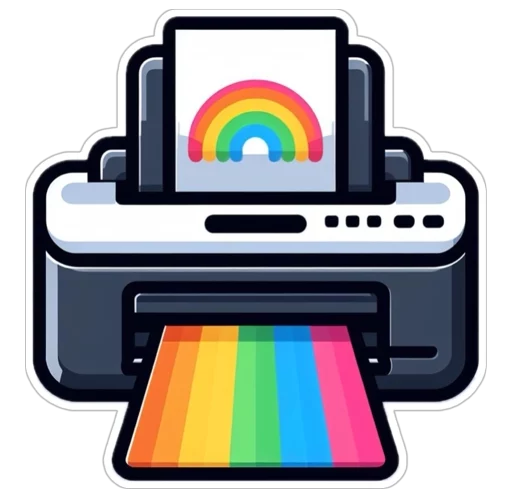Photo printers have become an essential tool for preserving precious memories. In this digital age, most people’s photos live digitally on phones and social media, but there’s something magical about having a physical photograph. From bulky, expensive machines, photo printers have evolved into compact, user-friendly units that help your digital memories come to life. Whether you are a professional photographer, a scrapbook lover, or a parent who wants to preserve family moments, the perfect photo printer can convert your digital images into true tokens of remembrance.
What is a photo printer?
A photo printer is a specific type of printer that is specifically designed to create high-quality photo prints. Unlike normal printers that use basic printing technologies and regular inks for definition, print colors, and gradients, photo printers make use of more advance printing method and inks or dyes for the purpose of delivering brilliant colors, sharp details, and smooth gradients.
How photo printers work
The photo printers use the Zink technology to print your smartphone’s images. This technology uses heat on heat-sensitive paper. Zink stands for “Zero ink” because this printer has no color cartridge. The heating mechanism triggers a chemical reaction to produce the desired colors. It is important to note that smartphone printers print in small sizes. The size is equal to an ATM card (2:3 inches).
Connect Photo Printer with iPhone
- Just connect your smartphone to the photo printer via Bluetooth/ Wi-Fi.
- Using an iPhone or iPad, use Airplay to connect with the printer.
- Select a photo to print.
- Use the share option and scroll down to “Airplay” or “Print” option.
- Select your printer.
- click on the Print option.
Connect Photo Printer with Andriod
- Android users can use the printer manufacturer app or third-party apps to connect with the printer.
- Connect your Android phone to the photo printer via Bluetooth or Wi-Fi.
- Select a photo to print.
- Go to the “share option“.
- Tap on the “Default Print” icon.
- Select the photo printer.
- Check the directions for portrait or landscape print.
- Tap on the “Print” option at the bottom.
Types of Photo Printers
1. Portable Smartphone Photo Printers
- Best for: Social media enthusiasts and instant print lovers
- Compact and lightweight.
- Connect via Bluetooth or Wi-Fi.
- Perfect for on-the-go printing.
- Example: HP Sprocket, Fujifilm Instax Mini and Polaroid ZIP.
2. Inkjet Photo Printers
- Best for: Home users and casual photographers
- Uses liquid ink sprayed onto paper.
- Excellent for high-resolution images.
- Suitable for hobbyists and professionals alike.
- Example: Canon PIXMA and Epson SureColor series.
3. Sublimation Printers
- Best for: Professional photographers and serious hobbyists
- Uses heat to transfer dye onto photo paper.
- Known for smooth, long-lasting prints.
- Ideal for event photographers and casual users.
- Example: Canon SELPHY and Kodak Dock.
Key Features to Consider When Buying a Photo Printer
1. Print Resolution
- Look for printers with high DPI (dots per inch)
- Minimum resolution: 4800 x 1200 DPI for crisp, detailed prints
2. Paper Compatibility
- Size range (4×6, 5×7, 8×10)
- Paper type (glossy, matte, canvas)
- Borderless printing capabilities
3. Ink
- Separate color cartridges
- Cost-effective ink replacement
- Fade-resistant ink technology
4. Connectivity
- Wi-Fi / Bluetooth
- USB / SD card compatibility
- Mobile app support
Best photo printer
1. Canon PIXMA Pro-200
- Professionally approved for prints.
- Allows the use of a wide range of paper sizes.
- Known for exceptional color reproduction.
2. Epson SureColor P700
- Exceptional color accuracy.
- For use with fine art photography.
- Environmentally friendly design.
3. HP Sprocket Series
- All in one budget-friendly printer.
- Perfect for instant smartphone prints
- Sticker photo options
4. Fujifilm Instax Mini Link 2
- An instant photo fun and portable option.
- It works with smartphones.
Tips for Maintaining Photo Printer
- For best results, please use high-quality photo paper.
- Cleaning the print head gets rid of build-up all the time to avoid clogs.
- There are several ways to update printer drivers and firmware to function smoothly.
- In short, store your unused paper somewhere dry and cool to prevent your paper from becoming warped.
Conclusions
When deciding which photo printer to buy, it is always about solving a puzzle between quality, cost, and convenience. When making the decision, consider your main use case, your budget, and how many you’ll be printing each day. From outdoor prints to instant memories from your smartphone — there’s a photo printer built especially for you.
Frequently Asked Questions (FAQs)
Inkjet printers are affordable, flexible to most home users and can print a wide range of print sizes. Even better are the dye sublimation printers for compact spaces and if instant photo is wanted.
For sure, many modern photo printers offer wireless connectivity, through Bluetooth, Wi-Fi or apps, so you can easily print from your smartphone. HP Sprocket and Fujifilm Instax Mini Link are examples.
Yes, the best results are achieved using photo paper. It has a special coating to improve the ink absorption to give vivid and clear images.
High quality photos printed on this paper with the correct ink can last decades, and with proper storage. Max longevity for the print is kept away from direct sunlight, humidity and high temperatures.
Heat transfer technology instead of traditional ink is used by many portable printers, including dye-sublimation models. For example, some such as ZINK printers use zero ink technology requiring special paper that responds to heat to activate the color.
Photo printers are built for image quality–they capture the best image quality because they use specially developed ink or dye and photo paper. Text and documents pass through regular printers, but in some cases they can’t attain the quality you demand in professional photos.
